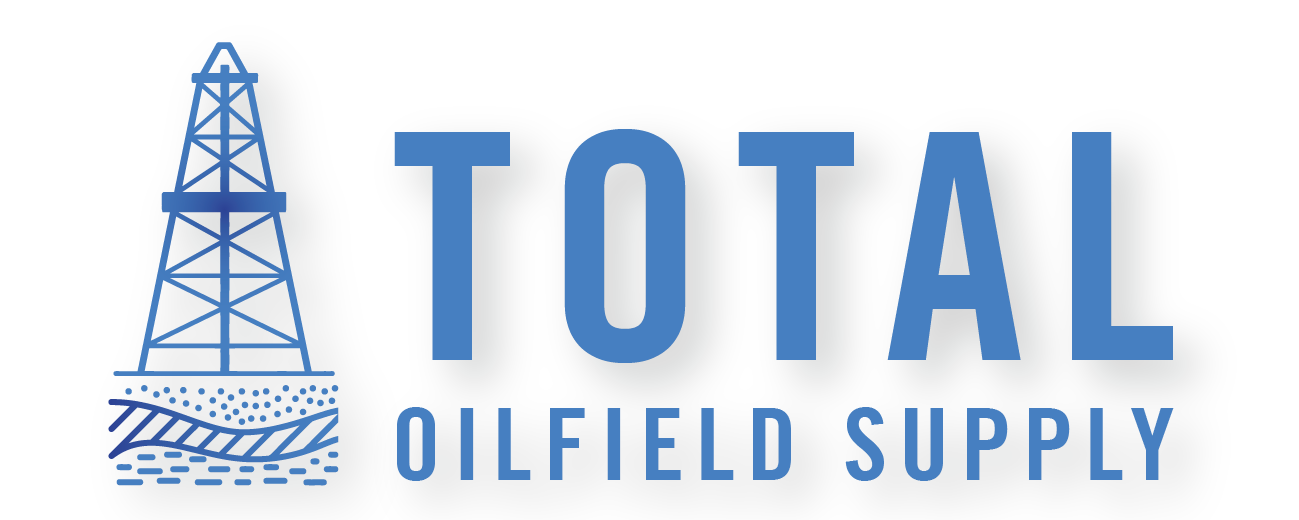Ever wondered what keeps the drill bit in a drilling operation free of debris and functioning smoothly? It’s the mud pump. This equipment is essential for circulating drilling fluid, known as ‘mud’, to not only cool and lubricate the drill bit but also to manage underground pressure and remove excavated material. In this article, we’ll delve into the mechanisms, types, and the pivotal role of a mud pump in drilling work, answering the question: what is a mud pump?
Key Takeaways
A mud pump is a critical component in drilling operations, circulating drilling fluid to clear debris, cool and lubricate the drill bit, and maintain borehole integrity, with its failure or absence leading to operation shutdowns.
Various types of mud pumps, including piston, plunger, and hydraulic, exist to cater to different drilling requirements, with factors such as pressure handling, flow rate, and operational noise guiding the choice of pump for specific applications.
Maintenance and troubleshooting are essential for the longevity and efficiency of mud pumps, with scheduled inspections, consistent lubrication, and cooling, as well as managing common issues like leaks and cavitation, being crucial for optimal pump performance.
Understanding Mud Pumps: Definition and Purpose
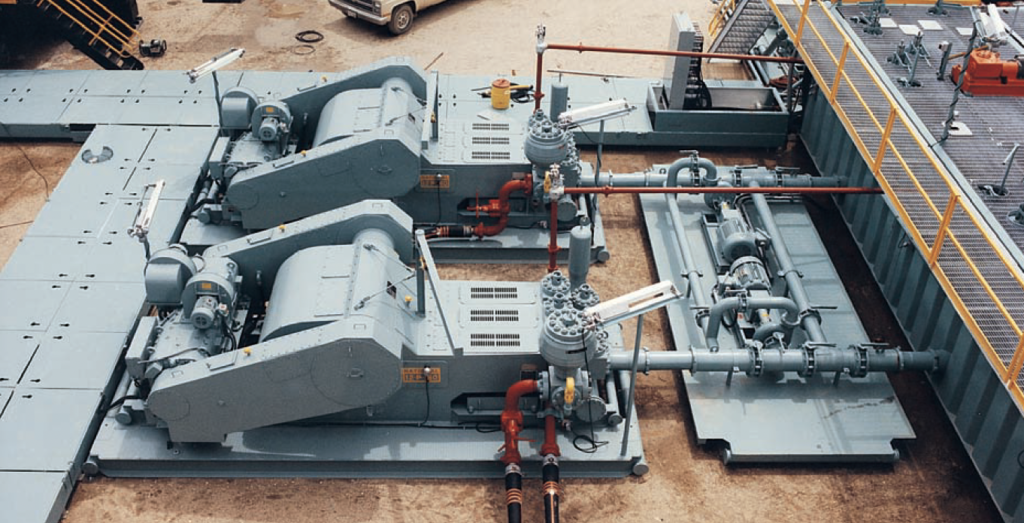
In the domain of drilling operations, the indispensable mud pump is encountered, a device characterized by its power and precision. A mud pump is a type of reciprocating positive displacement pump, specifically engineered to circulate drilling fluid, known colloquially as mud, through the depths of a drill bit and back up to the sanctuary of the surface. This circulation is not just a matter of convenience; it is the lifeblood of the drilling process, providing the necessary pressure to:
keep the drill bit clear and operational
prevent the drill bit from getting stuck
cool and lubricate the drill bit
carry the cuttings to the surface
Without a properly functioning mud pump, drilling operations would come to a halt.
As the oil well drilling process delves deeper into the earth, the mud pump reliably maintains the fluid’s circulation between the surface and the hole without interruption, ensuring positive circulation drilling.
Definition
Upon examining, it is revealed that a mud pump functions based on a powerful principle – it acts as a reciprocating piston/plunger pump performing a crucial task. The mechanism within a mud pump is akin to a living, breathing entity. Here’s how it works:
Pistons or plungers generate suction, pulling the drilling mud from its reservoir.
The mud is then propelled back into the well shaft under immense pressure.
This alternation between suction and discharge, driven by hydraulic power, is the heartbeat of the drilling operation.
It allows for the unending cycle of mud to flow, carrying away the debris and cuttings that the drill bit tirelessly produces.
Purpose
The role of a mud pump goes beyond mere circulation; it constitutes an integral part of a larger mud circulating system, safeguarding the performance and safety of drilling activities. This mechanical maestro not only extracts the rock powder and debris but also maintains the integrity of the wellbore. The cooling and lubrication it provides to the drill bit are not luxuries but necessities, facilitating safe and effective hydrocarbon extraction.
Without the substantial pressure generated by the mud pump, overcoming the challenges of various depths would be impossible, compromising the precision necessary for successful drilling. It is in its role of maintaining balance – between force, efficiency, and repair – that the mud pump truly shines.
Types of Mud Pumps: A Comprehensive Overview
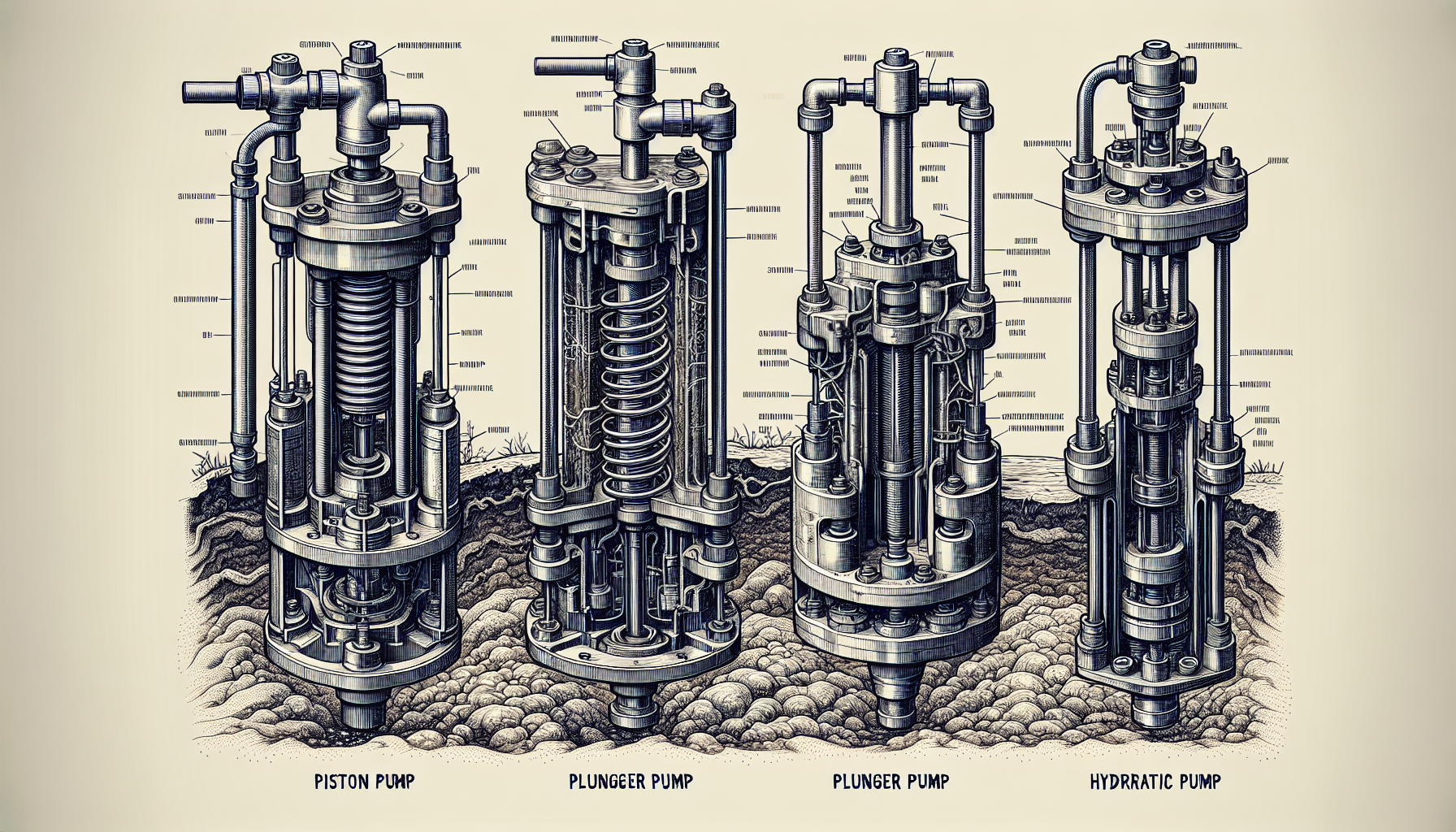
Mud pumps vary in forms, each customized according to different demands and drilling environments. These variations, including:
Piston mud pumps
Plunger mud pumps
Hydraulic mud pumps
Diaphragm mud pumps
Peristaltic mud pumps
are designed with specific attributes that enhance their performance and efficiency. The choice between single-acting and double-acting mud pumps rests on the rhythm of suction and drainage within a single cycle of the piston’s motion.
Innovations continue to propel the industry forward, with hex pumps and quintuplex designs ensuring steady mud flow and swift drilling, especially in deep wells and geologically complex regions. Choosing a suitable type of mud pump is a pivotal decision that affects the smooth operation of drilling and the quality of outcomes achieved.
Piston Pumps
Piston mud pumps, a commonly used mud pump variant, stand as the most common type, renowned for their energy transfer efficiency and ability to manage high pressure. Their key features include:
Larger diameter pistons, allowing for a slower yet equally effective operation
Durability and the ability to handle pressures that can reach staggering heights
Ideal for well treatments and hydraulic fracturing
In the orchestration of petroleum drilling rigs, the triplex mud pump configuration with its trio of pistons or plungers is a familiar sight on a drilling rig, while the quintuple mud pumps with five cylinders are called upon for their high-volume circulation capabilities. The duplex mud pumps, with their two-cylinder design, also play a role in drilling operations. The initial investment in quintuple pumps may be higher, but the tempo of drilling they enable and the operational efficiencies they offer can lead to a swifter and more harmonious drilling process.
Plunger Pumps
Plunger pumps, in contrast, favor a quieter performance, utilizing a plunger and packing technology to create an effective seal around the plunger surface, aided by the flow pressure itself,. These pumps are preferred when drilling operations call for high pressures at lower flow rates, suited to an environment that is less boisterous but equally demanding.
While plunger pumps may not reach the pressure heights of their piston counterparts, they offer a balance of ease of operation and sufficient pressure for certain drilling scenarios.
Hydraulic Pumps
Hydraulic drilling mud pumps are the powerhouses among their peers, capable of handling high pressures and improving drilling efficiency by facilitating faster drilling and reduced equipment wear. Operating these mud pumps is a task for the specialized; it necessitates specific training or expertise due to their inherent complexity.
These pumps often do not work in isolation but as part of a larger system that may include other pump types, orchestrating a powerful and efficient drilling operation. Innovations like the Centerline Mud Pump have addressed historical challenges with hydraulic-driven mud pumps, enhancing their lifespan and duty cycle.
Components of a Mud Pump: Fluid End and Power End
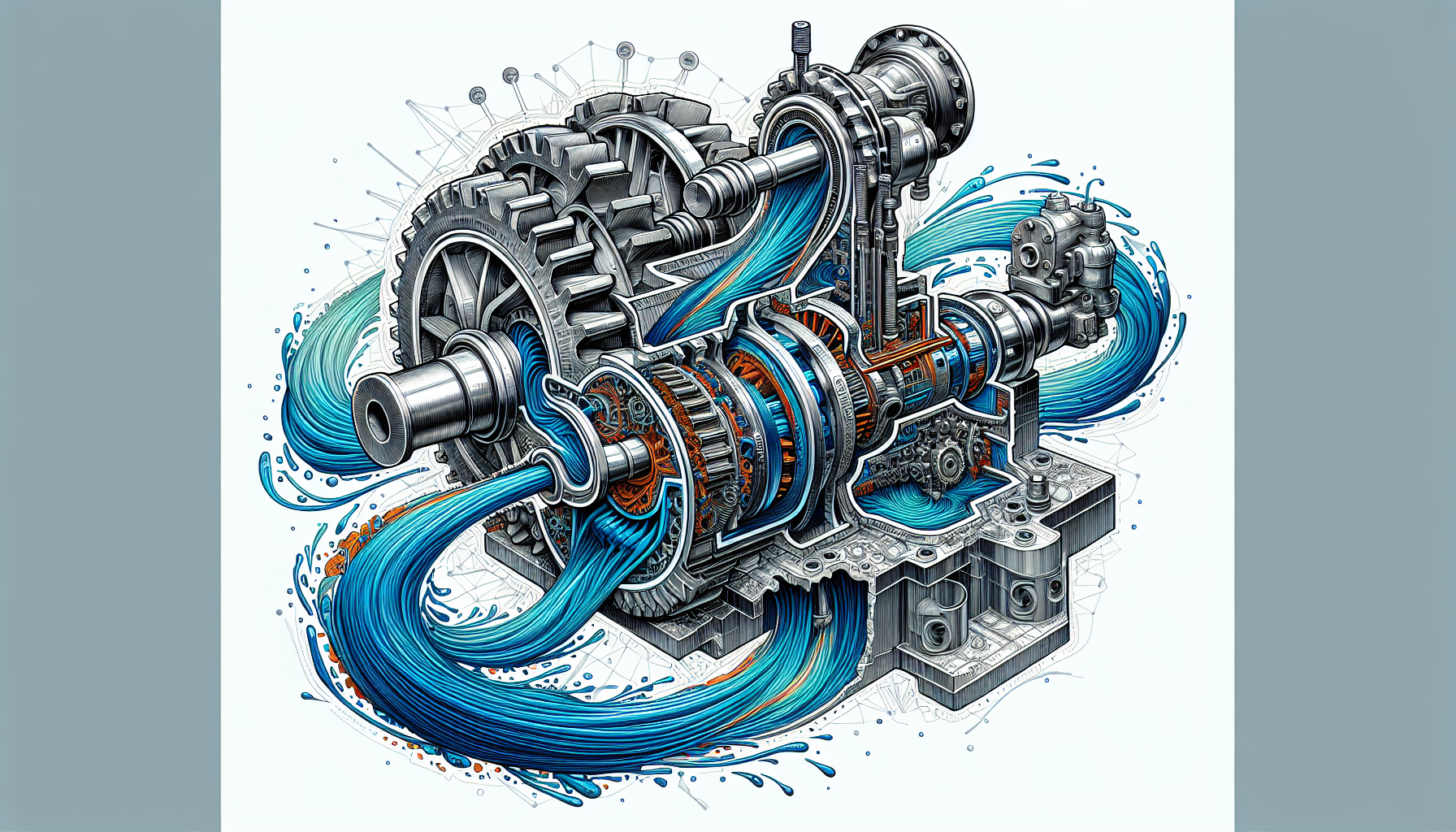
Mud pumps are complex machines, and their performance is reliant on the seamless integration of their two main components: the fluid end and the power end. These two ends work in concert to ensure the continuous flow of drilling fluid, with the fluid end handling the actual pumping of the fluid and the power end providing the necessary mechanical movement,.
The symbiotic relationship between these components is akin to the interplay between the strings and the bow of a violin, each one essential to the creation of harmonious music—or, in this case, the effective pumping of mud.
Fluid End
The fluid end of a mud pump is where the magic of drilling fluid circulation happens. Here, piston or plunger assemblies are responsible for the dynamic pumping action that propels the fluid through the drilling process. To maintain a steady rhythm, various valve types such as flapper, plate, or piston valves are utilized to regulate the mud flow, ensuring it moves in the desired direction and preventing any unwanted backflow.
The replaceable liners within the fluid end serve as the seal that upholds the system’s pressure, thereby preventing fluid escape and maintaining the integrity of the drilling operation. The flushing fluid plays a crucial role in this process.
Power End
Conversely, the power end is the driving force behind the fluid end’s pumping action. It converts the engine’s rotational motion into the reciprocating motion that the fluid end requires to perform its task. The power end’s components, like the crankshaft assembly, main bearing assembly, and pinion shaft assembly, are meticulously designed to withstand the harsh operating conditions they face. The crosshead assemblies are particularly noteworthy, as they convert rotational movement into linear reciprocating motion, with each adjustment and spacer ensuring the pump’s efficiency and concentricity.
The power end consists of the following components:
Crankshaft assembly
Main bearing assembly
Pinion shaft assembly
Crosshead assemblies
These components work together to flex and transfer power to the fluid end of the mud pump. They are designed to withstand the harsh operating conditions and ensure the pump’s efficiency and concentricity.
Measuring Mud Pump Performance: Displacement and Pressure
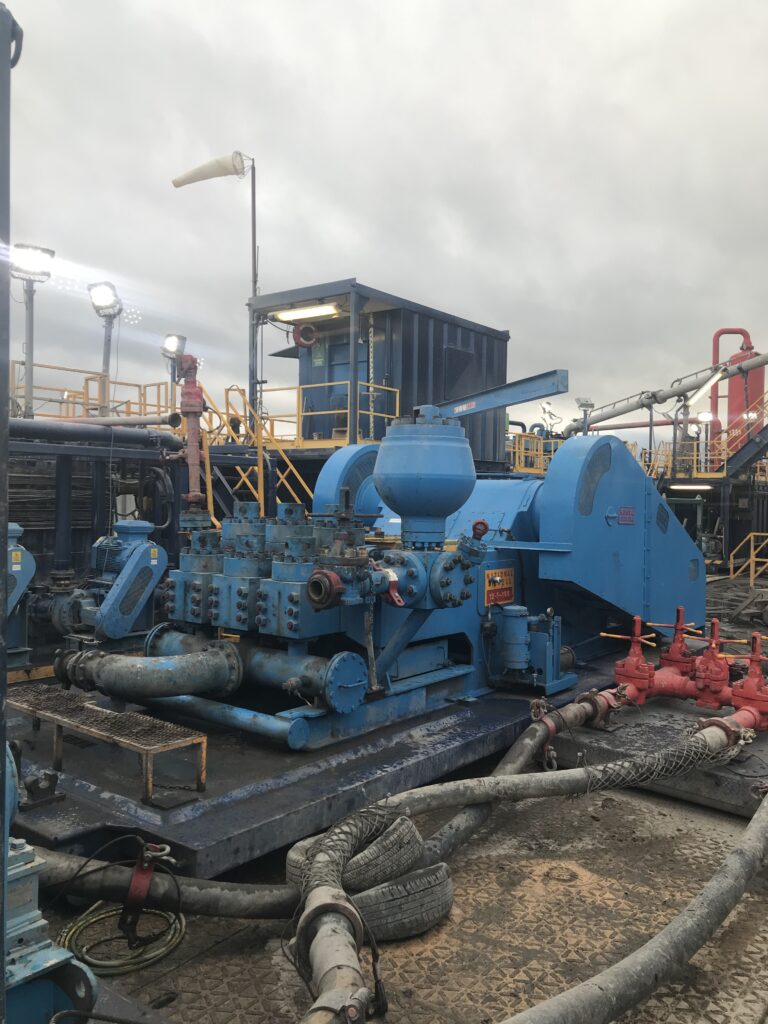
The effectiveness of a mud pump is evaluated based on two key metrics: displacement and pressure. Displacement measures the churn of drilling fluid, signifying the pump’s raw power in moving fluid through the drilling process, while pressure reflects the pump’s ability to maintain the necessary force to overcome subsurface challenges. Both metrics are vital to drilling operations, informing the adjustments needed to optimize performance and ensure that the drilling process maintains its tempo and efficiency.
Displacement
Displacement, expressed in liters per minute discharged, is akin to the volume of a symphony—the greater the volume, the more powerful the performance. Increased displacement is required for larger drilling holes to assure effective removal of debris, maintaining the wellbore’s stability and keeping the drill bit unobstructed. Adjusting the displacement is a delicate art, akin to tuning an instrument, requiring changes to be made as the hole diameter and depth evolve. One way to achieve this is by utilizing a discharge valve to control the flow.
A mud pump that falls short in delivering the required flow rate or pressure can lead to a slow drilling pace and accelerated wear on the equipment, disrupting the harmony of the drilling operation.
Pressure
Contrarily, pressure is the force that surmounts the resistance of the drilling fluid flowing through channels, enabling the mud pump to penetrate greater depths. Insufficient pressure can result in circulation loss, compromising hole stability and drilling efficiency, just as a lack of tension on a violin string leads to a flat note.
Centrifugal pumps, with their operational pressure ranges, and piston pumps, demonstrate the spectrum of pressure adjustments required for different drilling applications, each tailored to maintain the drilling process’s rhythm.
Applications of Mud Pumps in Various Industries
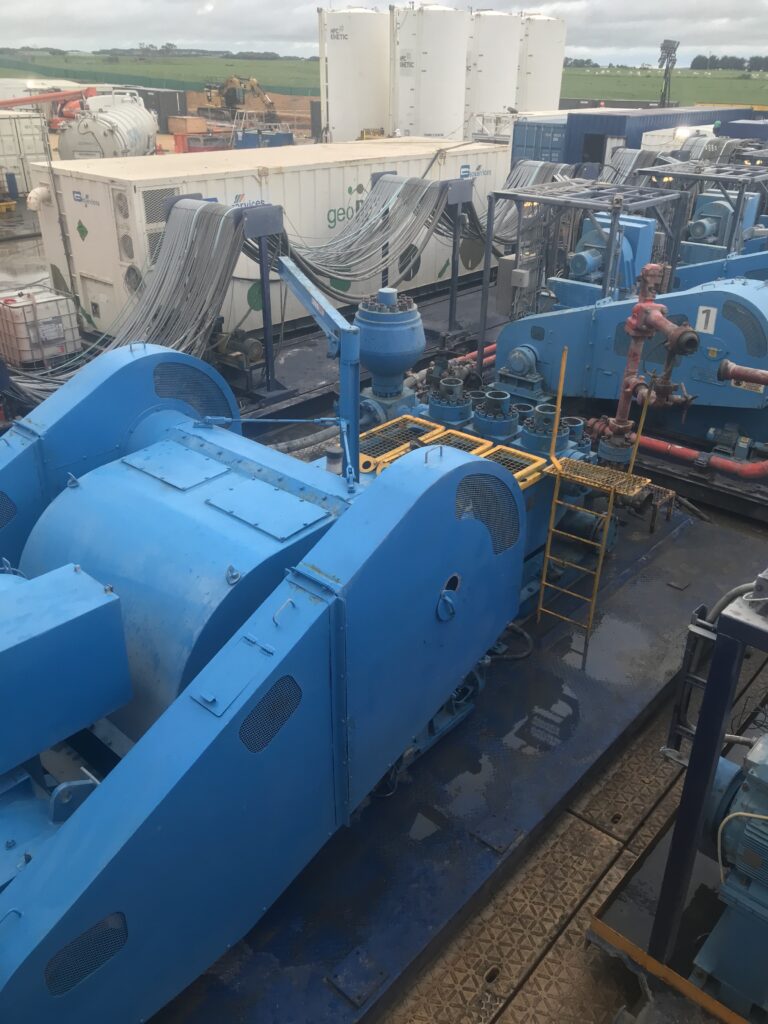
Mud pumps, versatile in nature, are not limited to oilfields; they form the backbone of hydraulic systems across a variety of industries. From drilling rigs to environmentally conscious operations, mud pumps, such as the Centerline Mud Pump, are integrated into systems that demand their robust capabilities.
The advent of synthetic-based fluids, designed to be both biodegradable and low in toxicity, has led to mud pumps playing a crucial role in pumping these eco-friendly alternatives for offshore and onshore operations. Thus, mud pumps are not only instrumental in the quest for resources but also in preserving the environment, striking a balance between industrial might and ecological sensitivity.
Maintenance and Troubleshooting for Mud Pumps
The reliability of a mud pump is directly proportional to the quality of its maintenance regimen and the ability to address issues as they occur. Key to this endurance is the lubrication and cooling systems, designed to minimize friction and heat, thereby maintaining optimal operating temperatures. The components of the power end, crafted to endure the rigors of drilling, rely on materials like stainless steel and alloy to maintain their integrity under harsh conditions.
Ensuring individualized feed lines and adequate diameters for supply piping are also crucial to prevent cavitation and maintain pump efficiency. Moreover, the integration of pulsation dampeners in-line with the flow can enhance energy exposure and performance, crucial for preserving the mud pump’s pressure capabilities.
Scheduled Inspections and Repairs
Consistent inspections and prompt repairs are essential to maintain the smooth operation of a mud pump. Components such as the piston’s cooling and lubrication system, which includes a centrifugal pump and spray nozzles, must be meticulously maintained to ensure piston longevity. The power end’s crankshaft, pinion shaft, and bearings are critical areas that require attention during maintenance, as their condition directly impacts the mud pump’s longevity and efficiency,.
Common Issues and Solutions
Even the best-maintained mud pumps can face challenges. Piston pumps that start leaking often require immediate repairs, as there is little room for on-the-fly adjustments. Plunger pumps, though generally less durable than piston pumps, offer the advantage of adjustable packing, allowing operators to manage leakage until proper maintenance can be performed on the pump cylinder.
Proper suction stabilization strategies, including the use of a suction valve, can prevent cavitation, ensuring the pump maintains its required displacement and averts fluid deficiency. Additionally, properly degassing mud is essential to prevent the reintroduction of gas-bearing mud into the borehole, which can decrease hydraulic column pressure and exacerbate well invasion.
Environmental and Economic Considerations in Mud Pump Operations
Environmental and economic factors are integral to mud pump operations. The noise pollution generated by these pumps poses health risks to humans and sonic disturbances to aquatic life, leading to an increased focus on reducing their environmental impact. Economically, the investment in mud pumps is significant, with the oil-and-gas industry in the U.S. estimating a $90 billion spend on environmental protection between 1992 and 2000.
However, the strategic application of mud pumps can enhance drilling operations by stabilizing wellbores, controlling subsurface pressures, and averting blowouts, consequently protecting personnel and reducing safety risks.
Summary
In the grand orchestra of drilling operations, the mud pump plays a leading role, harmonizing high-pressure performance with relentless reliability. From the robust piston pumps to the efficient plunger pumps and the powerful hydraulic varieties, each type brings unique advantages to tackle diverse drilling challenges. The intricacy of their components, from the fluid end’s valves and liners to the power end’s crankshaft and crossheads, illustrates a ballet of engineering precision. Measuring their performance through displacement and pressure guides operators to fine-tune their operations for optimal results. Beyond their industrial might, mud pumps embrace environmental and economic considerations, underscoring their pivotal position in sustainable resource extraction. As we draw the curtain on this exploration, we leave with a deeper appreciation for these mechanical titans, whose silent cadence beneath the earth’s surface enables us to harness its hidden treasures safely and efficiently.
Frequently Asked Questions
What is a mud pump used for?
A mud pump is used in drilling operations to circulate drilling fluid through the drill bit and back up to the surface, as well as to provide pressure for preventing the drill bit from becoming plugged.
What is another name for mud pump?
Another name for a mud pump is a drilling fluid pump, which is a reciprocating pump designed to circulate drilling fluid under high pressure. This pump is also referred to as a mud drilling pump or well drilling pump.
What is the problem of mud pump?
The frequent faults of a mud pump include leakage of the valve box, bearing burning, and abnormal noise, which can affect its normal use. Regular maintenance and inspection can help prevent these issues.
What are the main components of a mud pump?
The main components of a mud pump include the fluid end (piston or plunger assemblies, valve assemblies, liners, and pulsation dampeners) and the power end (frame, crankshaft, connecting rods, crossheads, and supporting structures). These components work together to facilitate the pumping of mud in various industrial applications.
Why is maintenance important for mud pumps?
Maintenance is important for mud pumps because it ensures their efficiency and longevity by minimizing friction, controlling heat generation, and maintaining optimal operating temperatures, which helps prevent issues like cavitation and leakage. Regular inspections and repairs are crucial for this.
